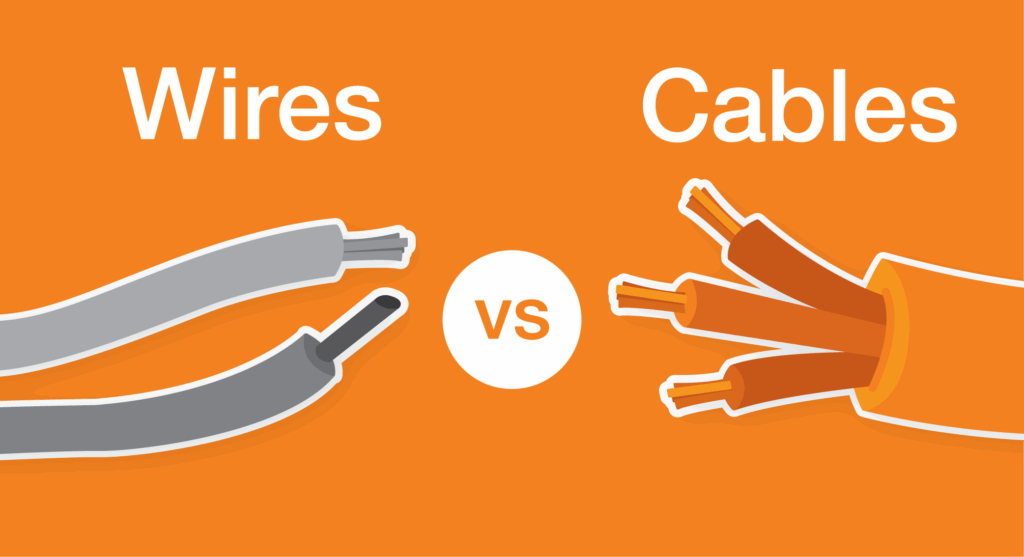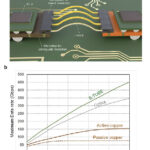
Wire vs Cable
What is the Difference Between a Wire and a Cable?
The fundamental difference between a wire and a cable lies in their construction and application. While these terms are often used interchangeably in everyday conversation, understanding the distinction between wire and cable is crucial for electrical professionals, contractors, and anyone working with electrical systems.
Defining Electrical Wire
An electrical wire is a single conductor designed to carry electrical current from one point to another. Wires represent the most basic form of electrical conductor and serve as the building blocks for more complex electrical systems.
Key Characteristics of Wire:
- Single Conductor: Contains only one conductive element
- Basic Insulation: May have minimal or no insulation depending on application
- Flexibility: Generally more flexible than cables due to simpler construction
- Cost-Effective: Lower material costs for basic electrical connections
- Installation: Requires additional protection in most applications
Types of Electrical Wire:
- Solid Wire: Single piece of metal conductor
- Stranded Wire: Multiple thin strands twisted together
- Bare Wire: No insulation covering
- Insulated Wire: Protected by rubber, plastic, or other insulating materials
Understanding Cable Construction
A cable consists of two or more wires bundled together within a protective outer sheath. This construction provides enhanced protection, organization, and functionality compared to individual wires.
Essential Cable Features:
- Multiple Conductors: Contains two or more individual wires
- Protective Sheath: Outer jacket provides mechanical and environmental protection
- Enhanced Safety: Built-in protection reduces installation risks
- Organization: Keeps multiple conductors organized and manageable
- Durability: Superior protection against physical damage and environmental factors
Common Cable Types:
- Power Cables: Designed for electrical power transmission
- Control Cables: Used for control and instrumentation applications
- Communication Cables: Specialized for data and signal transmission
- Portable Cables: Flexible construction for temporary installations
Wire vs Cable: Technical Differences
Construction Complexity
The primary difference between wire and cable lies in construction complexity. Wire features a single conductor with basic protection, while cable incorporates multiple conductors within a comprehensive protective system.
Protection Levels
Cables offer superior protection compared to individual wires. The outer sheath of a cable provides mechanical protection, moisture resistance, and chemical protection that individual wires cannot match.
Installation Requirements
Wire installations typically require additional conduit or raceway systems for protection. Cables often provide built-in protection, simplifying installation requirements and reducing overall system costs.
Flexibility and Handling
While individual wires offer greater flexibility, cables provide better organization and handling characteristics for multi-conductor applications. The choice between wire and cable often depends on specific installation requirements.
Applications: When to Use Wire vs Cable
Wire Applications:
- Internal Equipment Wiring: Inside electrical panels and control boxes
- Point-to-Point Connections: Simple, direct electrical connections
- Conduit Systems: Where external protection is already provided
- Custom Installations: Applications requiring specific wire configurations
Cable Applications:
- Building Wiring: Residential and commercial electrical installations
- Industrial Power Distribution: Heavy-duty power transmission
- Outdoor Installations: Applications requiring weather resistance
- Portable Equipment: Temporary power and control applications
Safety Considerations: Wire vs Cable
Wire Safety Factors:
Individual wires require careful attention to protection and insulation. Proper installation techniques and protective systems are essential for safe wire applications.
Cable Safety Advantages:
Cables provide inherent safety benefits through integrated protection systems. The outer sheath protects against physical damage, moisture, and environmental hazards.
Cost Analysis: Wire vs Cable Economics
Initial Investment:
Wire typically offers lower initial costs but may require additional protection systems. Cable represents higher upfront investment but often reduces overall installation costs.
Long-Term Value:
Cable systems often provide better long-term value through reduced maintenance requirements and enhanced durability compared to individual wire installations.
Industry Standards and Regulations
Wire Standards:
Individual wires must meet specific conductor requirements and insulation standards based on their intended application and environmental conditions.
Cable Certifications:
Cables undergo comprehensive testing for mechanical properties, electrical performance, and environmental resistance to ensure compliance with industry standards.
Future Trends: Evolution of Wire and Cable Technology
Advanced Materials:
Both wire and cable technologies continue evolving with new insulation materials, improved conductor designs, and enhanced protective systems.
Smart Integration:
Modern cables increasingly incorporate smart features, while wire technology focuses on improved performance and environmental compatibility.
Making the Right Choice: Wire vs Cable Selection Guide
Project Requirements Analysis:
Consider installation environment, protection needs, conductor requirements, and long-term performance expectations when choosing between wire and cable solutions.
Professional Consultation:
Electrical professionals can provide valuable guidance on wire vs cable selection based on specific application requirements and local electrical codes.
Conclusion: Understanding Wire and Cable Differences
The difference between wire and cable extends beyond simple construction variations. While wire provides basic electrical conduction, cable offers comprehensive solutions for complex electrical systems. Understanding these differences enables better decision-making for electrical projects, ensuring safe, efficient, and cost-effective installations.
Whether selecting individual wires for simple connections or comprehensive cable systems for complex installations, the key lies in matching the conductor type to specific application requirements. Professional electrical contractors and engineers rely on this fundamental understanding to design and implement effective electrical systems across residential, commercial, and industrial applications.





